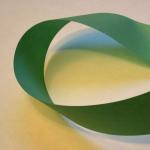How to sew a rose from fabric with your own hands. Fabric rose




I’ve been meaning to do a master class on fabric flowers for a long time, but I never got around to it. But before the new year, I launched my own website, which required (and continues to require!) content, and here it’s just long new year holidays- helpers showed up at home, and I decided to take advantage of this wonderful circumstance :)
As with any flower made from fabric, in this rose the result depends on the fabric itself. The peach rose in the main photo is made from a toile. In MK I used poplin (to be honest, I don’t really like it, but it happened).
Let me make a reservation right away - this master class is designed for those who already have at their disposal boules, impregnated fabric (factory or self-made) and have minimal basic skills in flower making. Dear craftswomen, don’t be offended, but in this MK I won’t tell you how to properly dye fabric, how to make leaves and how to put glue on a rose. And not out of harm at all :) The fact is that this rose has one charming highlight, which makes it both complex (until you guess what the secret is) and simple (when you already know the answer) - that’s about it I want to tell you :)
So let's get started.
1. First you need to make patterns. In the photo below there are 3 parts - black - the future flower, white - the leaf and backing.

2. Important! The fabric must be double-sided (for example, dechine, toile, josette, crepe de chine, etc.)
Cut out the backing, 9 (or as many as you want) leaves and 5 pairs (or 10 pieces) of petals. (Don’t forget that all the details are cut out on the bias!) Here by petals I mean this very circle or square :) And we place this detail directly on the fabric (so that each individual petal is at an angle of 45 degrees ). I folded the fabric in two layers, so the photo shows pairs. I had the backing glue lying around for a long time, painted and not from this rose, but I didn’t cut out another one - why waste it :)

3. The next important stage is painting. Here it is necessary to remember that in a living flower there are no absolutely monochromatic petals. Therefore, all sorts of different accents will not be superfluous - the main thing is that the color scheme is harmonious :)

4. After the petals have dried, you need to fold them. First in half:

5. And then in half again :) This way we “feel” for the middle of the corolla. Of the 10 corollas, make a hole in the middle of 4 with an awl (these corollas will form the middle). Here we have the opportunity to hide flaws :) If some of the aureoles are poorly colored or dirty somewhere, then we can safely pierce them :)

6. When all the corollas are folded and the necessary ones are pierced, we take up the scissors. We cut our petals along the fold lines, not reaching the center by about 0.5 cm on each side:

7. Use a 2.5cm boule to process 4 pierced corollas, as shown in the photo:


8. Change the bun to a smaller one - 1.5 cm. You can use other sizes of buns - it all depends on the pattern you make. The smaller the pattern, the smaller the “caliber” of the tool.
The next step is to process 6 unpierced corollas. Here we will process not the whole petal, but its halves: first we fill one side of the petal, then turn the whisk over inside out and fill the other half petal. We process the adjacent petal in the same way, only in mirror image.

9. Please note that the “convexity” and “concavity” of the petalsadjacent:

10. Now we have these two piles and they are missing something:

11. But they don’t have enough edge processing :) Take hot tweezers and run them along the edges of all the petals.At 4 pierced corollasprocess all edgesone way(Push):

12. On “wavy” corollasbend the edges in different directionsin this way: one petal is away from you, the other is towards you (more precisely, we turn it over, and also away from you))). Pay attention to the photo:

13. We wrap a cotton core around a pair of wires bent in half. Of course, yours may turn out different, but try to match the volume to the petal:

14. I like to make a cotton center with a “spout” so that it is convenient to plant the very first petal (as you may have guessed, the hour has struck for our “pierced” corollas):

15. We glue the opposite petal second. Behind them are also the 3rd and 4th.

16. And now from just one corolla we have a quite nice bud :) If we stop here and glue the backing and leaves, it will be very cute (in the photo with a peach rose there is just such an option):

17. But since it’s not our rule to stop halfway, let’s continue! We glue the 2nd whisk in exactly the same way. Here the bud is already more plump, and again we could stop, but....

18. We are gluing the 3rd whisk! Don't forget to look at our bud in profile -the middle should not stick out above the bud, and should not be heavily recessed:

19. Our little bud has become even more plump and round:

20. Well, the last jerk is the 4th whisk. We glue it a little looser than the previous one. To do this, coat only the lower third with glue:

21. This is what we should get (a little looser, but not tighter):

22. And now the very “secret” because of which this whole MK was started :) In the center of the wavy corollas we put a drop of glue andfold in half:

23. In the middle of the resulting half-whisk, place a drop of glue,fold in half again (with a slight shift to the side)and look carefully at what we got :) But it turned out that all our edges twisted in different directions began to look in one direction, and the neighboring bulges became opposite :)

24. We turn our quarter so that the “curl” on the petals looks down (no, if the fabric allows, then you can experiment!))) and coat the base with glue:

25. Glue:

26. And so all 6 corollas:

27. That's all, actually :) All that remains is to attach the leaves and gluing. There are many options for processing leaves, this time I wanted to make them like this:

28. That’s the end of the fairy tale, whoever mastered it - well done!)))

Making a bouquet of roses from fabric.
Sew a bouquet of luxurious fabric roses as a decoration onto a tieback, a lambrequin, or onto a sagging edge of a curtain. Such a bouquet of fabric flowers will never wither.
DIY fabric flowers for curtains DIY fabric flowers for curtains
DIY fabric flowers for curtains DIY fabric flowers for curtainsFirst, watch the video on how to twist a rose from fabric:
At the end of this article there are 3 more very interesting videos master class on making roses from satin ribbons. You will definitely like it!
Now watch the master class in pictures:

The bouquet consists of flowers and buds surrounded by several leaves. Roses are made from strips of fabric cut on a bias thread and then gathered into the shape of coils. The buds are assembled in the same way as flowers, but from shorter and more tightly gathered strips of fabric. To give fabric flowers and the leaves are voluminous, a padding polyester can be inserted between the strips of fabric. Each leaf can be decorated with veins (machine stitching), which will make them more natural.

1. Draw diagonal stripes on a piece of fabric 10 cm wide. One for each flower made of fabric. The length of the strip of fabric for a flower should be 70 centimeters, for a bud it should be smaller.

2. Fold the strip in half lengthwise, right sides facing out. Round the corners of the strips as shown in the picture. Trim off excess fabric.

3. Hand stitch the bottom raw edge of the strip, including the rounded edges, using basting stitches, leaving 6mm from the edge.
4. Stretch the thread at one end of the strip and gradually begin to roll up the rose flower from the fabric, securing the bottom by hand with random stitches.

5. Bud fabric roses it is rolled up in the same way as a flower, but more tightly (less gathering) and at the end a larger gathering is made in order to make it look like the petals of the bud have begun to open.

<<<ПОДПИШИСЬ НА НОВЫЕ СТАТЬИ САЙТА>>>
Look at the beauty you can create by decorating your curtains and lambrequins with bouquets fabric roses.
Decoration:


Lambrequin decoration:

Decoration of pillows and bedspreads:

Decorating a decorative wreath with roses:

You can see how to make such a wreath:
Beautiful flowers are made from fabric by a visitor to this site, Ekaterina Pokhilko, who decorates the entire interior of her home with them:

There are many in various ways creating roses from fabric. It is impossible to consider them all, and there is no need for this. Now you will look at the basic ways to create different roses for different purposes, and then, using your own imagination, you can modify and improve your flowers. You will learn how to make a delicate rose from the most ordinary high-quality fabric from the material below on how to work with your own hands.
How to make a rose from fabric with your own hands in several options
We study the first method - from an untreated strip of fabric
All that is needed to create a rose like the one in the photo is a strip of untreated fabric, which many needlewomen probably keep and often simply throw away.
A not very tight knot is tied in the middle of this strip; it will serve as the core of your future rose.
Now each side of the strip is twisted a little, as if creating light curls.
After this, the two ends of the strip are folded together and twisted in a spiral in one direction and wound around the middle.
The resulting rose must be sewn or glued to a non-disintegrating base. For these purposes, a circle cut from felt is best suited.
If you use a strip 40-45 cm long and 1.5-2 cm wide, you will get a rose with a diameter of approximately 3.5 cm.
If you want to make the rose more delicate, then fold each end of the strip in half, twist it a couple of times in a spiral and lay it around the middle in the same way, but only in one layer.
Let's look at the second method - a lightweight flower made of synthetic fabrics
This method is convenient to use in the presence of shiny or translucent fabrics. Roses made from such fabrics will look especially light and gentle. Satin fabric, organza, tulle and other similar materials are ideal.
First, cut out individual petals. To ensure that the petals match in size, and to save time, you should fold the fabric in several layers, thus cutting out several petals at a time.
To prevent the fabric from fraying, the edges of each petal need to be slightly scorched over the flame.
Sew the rose starting from the middle - from the smallest petals to the largest.
You can simplify stitching a rose if you cut out not one petal at a time, but a whole circular shape at once. Decorate the middle of the flower with rhinestones, beads or any other decorative elements.
Don't get hung up on preserving the texture of the flower - try combining fabrics of different shades, or, for example, different fabrics one color range, But varying degrees transparency.
If the fabric is not synthetic, but natural, or with an admixture of natural ones, then during firing a black charred edge may appear. Don't be afraid of this - try to use this seemingly flaw to achieve stunning decorative effects.

Learning the third option - making a rose from denim
Of course, you don’t have to make something like this only from jeans, but a thick fabric that holds its shape well will look great.
It is necessary to cut out two strips of fabric so that the lower edges are smooth and the upper edges are wavy, and then sew them together.

Then just stitch smooth edge stripes with small stitches and pull it off, twisting the fabric into a bud. Fix the flower, decorate it at your discretion and wear it to your health!
Let's look at the step-by-step process of making a lightning rose
To create this rose you will need a fairly long zipper, thread and a needle.
Open the zipper all the way and fold the zipper halves step by step as shown in the photo. It is convenient to fix intermediate results by pinning them with a needle, but you can also immediately fix them with glue or stitch them.
Such decoration will certainly look great on a headband, or on clothes in the form of a voluminous and bright brooch.
In addition to the option presented to you, there are a great many ways to fold a zipper so that you get a wonderful flower. For example:

Making a simple rose with smooth edges
To make such a rose you will need to make a small pattern.

All parts must be identical and symmetrical along and across.
In order to practice, it’s worth choosing a non-slippery fabric in the first couples, and making the rosette a smaller size. For this, seven to eight petals, about six centimeters long each, are enough.
One by one, fold all the petals in half lengthwise, right side out.
Then place them on top of each other with their edges, as shown in the photo below.

Sew the workpiece with small stitches and pull it together, tucking in the rose petals.
Fix the flower well from below so that it does not fall apart and hide the bottom of the flower by decorating it with green petals.

As you have already noticed, there is nothing complicated in creating such roses. Even for beginners, it will not be difficult to build a couple of such flowers, and then make a brooch, necklace or any other decoration from them.
Video on the topic of the article
And, in conclusion, we present to you several MKs in video format, which will discuss in detail some of the methods we presented for creating a rose, and a couple of new options that you can try yourself.
Flowers made from fabric are not just beautiful and spectacular craft, but also an excellent decor for clothes, bags, belts, hairpins, headbands and other accessories. They will be an excellent basis for making necklaces, brooches and other original jewelry, which will be appreciated by both girls and young fashionistas.
To create truly beautiful roses, it is not necessary to use special tools and expensive impregnated fabrics. It is quite enough to have ordinary rags, scissors, and needles.
It can be with a pattern, or just plain. It is easiest to work with non-slip fabrics that have a medium density. If you use calico or chintz, it is not necessary to use scissors. These fabrics tear well. The edges are left raw. The protruding threads form a light fringe, which will give the roses even more charm and charm.
Size
The longer and wider the strip, the larger the finished rose. To get a flower arrangement different sizes, use strips of different sizes. From a strip of 40 by 1.5 cm you will get a rose with a diameter of approximately 3.5 cm.

The finished strip is twisted around a knot tied in the middle - the core of the rose. The knot is made as tight as possible. The ends of the strip are folded together and wound in a spiral around the middle. Work must be carried out on a flat surface. The strips are slightly twisted among themselves and separately. The formed “snail” is secured with pins so that it does not fall apart.

Delicate rose with thin petals is created according to a more complicated scheme. One of the ends is folded lengthwise and twisted two or three turns. The fabric is wrapped around the formed center, as in the previous version, but in one layer.
Fixing the flower
The resulting rose must be secured to a non-falling material. The ideal option would be a circle cut out of felt. The flower is glued or sewn.
Simple rose made of synthetic fabric
The ideal option would be shiny or transparent fabric. Organza, satin, tulle and similar materials are perfect.

You can cut the petals one at a time or several at once. In the latter case, the process will go much faster and easier. To cut out several petals, the fabric is folded in layers, secured in the center and cut out. Melt the edges of the elements over a candle flame. This must be done as carefully as possible.
The petals begin to be sewn from the middle. The smallest ones are used first, gradually moving on to the larger ones. The resulting center of the rose, which is not too lush, can be decorated with beads, rhinestones, and stones. This will create the effect of a fully bloomed flower.

Roses made from fabrics of various shades will look very original and truly chic. They can form a smooth transition from dark to light or be located in an impromptu “mess”. There are no restrictions. The main thing is to think through the concept in advance, because the petals will have different sizes.
Unusual “surges” when singeing petals over a candle are obtained when not one hundred percent is used. synthetic fabric. This effect looks very original, giving the rose a special zest.
Rose made of figured fabric strip
Flowers with curly edges are made from any thick material. This is due to the fact that the strip is not twisted or deformed, but is cut out with a figured edge.

Cutting out a strip
If the edges of the fabric do not fray, it does not need to be processed, you can immediately begin cutting out a strip with a wavy edge. The size and shape of the wave are chosen arbitrarily. The main thing is that it has a smooth transition along the top edge. The fraying fabric can be first processed or cut in half, stitched, and then turned inside out and straightened out the seam.
The strip at the bottom is stitched with small stitches, the thread is pulled together so that a bud is formed. Basically, buds perform not just as separate element, and fixed on a stick simulating a stem. The attachment point is covered with sepals made of green or another shade of fabric.

Rose with smooth edges
A rather labor-intensive and complex option for creating roses, but at the same time it allows you to get truly beautiful, festive-looking flowers. Made from satin, they are suitable for creating a whole bouquet, which will be a wonderful gift for a birthday or wedding.
Fish-like petals are cut out of satin fabric. They must be absolutely symmetrical both across and along. The easiest way is to make a small rose first. It is best to use as non-slip a fabric as possible. It is enough to make 7-8 “fishes”, the length of which varies from 6 to 7 cm.

Each piece is folded in half so that the right side of the fabric remains on the outside. Two petals overlap each other. The raw edges of both the left and right elements should be completely aligned.

In a similar way, all the petals of the future rose are placed in a chain and pinned.

The collected petals are stitched with small stitches, departing from the rounded edge by about 3-4 mm, and then pulled together. In one neat movement, roll the rose from one end to the other. To prevent the flower from falling apart, it is fixed at the bottom with threads. The finishing touch is to sew on green decorative leaves.

Decorating clothes with fabric roses does not imply that the flower is sewn onto it. For this purpose, use Velcro or pins. This allows you not only to wash your wardrobe items without any problems, but also to change one rose for another, depending on your mood or occasion. A chic rose made from satin or other fabric, made by yourself, can transform casual clothes in a great holiday outfit.
From fabric you can create very original flowers and even flower arrangements. Such textile flowers serve as decoration for any surface: clothes, cards, boxes, curtains, hair ties, etc. In this master class you will learn how to create a very simple rose from a mixture of different fabrics. Anyone can make such flowers without much effort.
To create a rose you will need the following materials and tools:
peach chiffon; organza transparent peach color; transparent organza with white or matching color print; satin white fabric; candle for singeing the edge of the fabric; scissors; paper; pencil; pins; needle; threads
Select the fabric so that all colors match each other. It is desirable that the colors alternate between matte and transparent, light and darker.
First, let's prepare the petal templates. We bend the strip of paper in half and draw halves of hearts along the folds. The halves should be of different sizes, and the size should increase gradually. The templates don't have to be hearts. But this is the optimal shape that can help achieve maximum visual effect for the rose.

We fold the fabric in many layers and be sure to secure it with pins along all edges. This is necessary so that the cut out hearts are all the same size and the fabric does not spread in different directions. We outline all the templates with a pencil. The largest petals will be collected initially, so you need to decide what color will be the first, second, etc. The colors will be collected in layers. Cut out the petals drawn on the fabric. Blanks with pencil marks can be thrown away immediately, as their scorched edges will be black.

We begin to singe the edges of all the cut petals. This must be done very carefully so as not to deform the petal. We take the sharp end of the heart with tweezers and hold it over the fire, scorching the edges very quickly.

We have these rose petals of different sizes and different colors.

We begin to collect the rose from the largest petals. One layer will consist of 4 petals of the same color. We pierce the first petal with a needle and make several small stitches. We bring the needle out from the wrong side. We fasten the sharp corners of the petals.

Apply the second petal. We stitch with a needle from bottom to top and top to bottom. Thus, the needle should always be brought out at the bottom.

We collect 4 petals and begin to lay out a new layer, which is slightly smaller in size and of a different color. In the master class, the petals are arranged so that they are matte and large at the bottom, and transparent alternate with matte in the upper layers and until the end.






